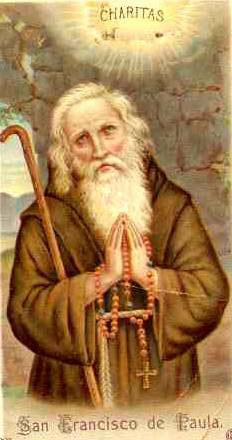We ask you, urgently: don't scroll past this
Dear readers, Catholic Online was de-platformed by Shopify for our pro-life beliefs. They shut down our Catholic Online, Catholic Online School, Prayer Candles, and Catholic Online Learning Resources essential faith tools serving over 1.4 million students and millions of families worldwide. Our founders, now in their 70's, just gave their entire life savings to protect this mission. But fewer than 2% of readers donate. If everyone gave just $5, the cost of a coffee, we could rebuild stronger and keep Catholic education free for all. Stand with us in faith. Thank you.Help Now >
Mandan Indians
FREE Catholic Classes
A formerly important, but now reduced, tribe occupying jointly with the Hidatsa (Minitari or Grosventre) and Arikara (Ree) the Fort Berthold reservation, on both sides of the Missouri, near its conjunction with the Knife River, North Dakota. The Mandan and Hidatsa are of Siouan linguistic stock, the latter speaking the same language as the Crows. The Mandan call themselves Numankaki, "people," the name by which they are commonly known — Mawatani in the Sioux form — being said to be of Cree origin. According to the Mandan genesis myth they originally lived underground, beside a subterranean lake. Some of the more adventurous climbed up to the surface by means of a grapevine and were delighted with the sight of the earth, which they found covered with buffalo and rich with every kind of fruits; returning with the grapes they had gathered, their countrymen were so pleased with the taste of them that the whole nation resolved to leave their dull residence for the charms of the upper region; men, women, and children ascended by means of the vine; but when about half the nation had reached the surface, the vine broke, and the light of the sun was lost to the remainder. When the Mandan die they expect to return to the original seats of their forefathers, the good reaching the ancient village by means of the lake, which the burden of the sins of the wicked will not enable them to cross. It is possible that the tradition regarding the "ground-house" Indians who once lived in that section and dwelt in circular earth lodges, partly underground, applies to this tribe. Their traditional migration was up the Missouri, and the remains of their former villages can be traced as far down as White River, S.D. The earliest white explorer to visit them was the French La Verendrye in 1738, but their villages were even then the trading rendezvous and trail centre for all the tribes of the upper Missouri. About the year 1750 they were living about the mouth of Heart River, in the vicinity of the present cities of Mandan and Bismarck, in nine villages, two of which were on the east bank of the Missouri. They probably numbered then about 3600 souls. Between that time and the visit of the American explorers, Lewis and Clark, who wintered among them in 1804-5, they had been reduced by smallpox (1780-2) and wars with the Sioux to about 1200 souls in two villages on opposite sides of the Missouri, below the Knife river. Here they were visited between 1832 and 1837 by the German traveller, Prince Maximilian, and the artist Catlin, both of whom, like Lewis and Clark, have much to say of their peculiar ceremonies, manly character and friendly disposition. In 1837-8 a great epidemic of smallpox which swept the whole northern plains almost exterminated the tribe, leaving alive only about 130 out of 1600 souls. A few years later (1845-1858) the survivors followed the Hidatsa up to a new situation about the former Fort Berthold, where a reservation was later established for the three tribes. The Mandan now number about 260, the Arikara 405, and the Hidatsa 460, a total of about 1125, as compared with perhaps 9000 about 1780. Excepting for some trouble with the Arikara in 1823, all three tribes have maintained friendly terms with the whites.
With the possible exception of the priests who accompanied La Verendrye, the first regular mission teacher among the Mandan and associated tribes was Father Francis Craft, best known for his work among the Sioux, who with the help of some of his Sioux Indian sisterhood, began what is now the Sacred Heart mission, at Elbowoods, McLean Co., N.D., on the east side of the Missouri and within the reservation, which claims now over 500 communicants in the three tribes served by a secular priest. Plans are completed for a Benedictine mission house to be in operation before the close of 1910. The Mandan and associated tribes were equestrian in habit and depended about equally on hunting and agriculture, cultivating large fields of corn, beans, pumpkins, and sunflowers (for the edible seeds), which they traded to the Plains tribes for horses and buffalo robes. According to Maximilian the Mandan were vigorous, well made, rather above medium stature, many of them being broad-shouldered and muscular. They paid the greatest attention to their headdress. Tattooing was practised to a limited extent, mostly on the left breast and arm, with black parallel stripes and a few other figures. Some of the women were robust and rather tall, though usually they were short and broad-shouldered, and were adept potters. Their houses were large circular communal structures of stout logs covered with earth, and their villages were sometimes palisaded. They had the same organization of military societies common to the Plains tribes generally. Polygamy was common. Besides the Sun and the Buffalo, they invoked a number of supernatural personages, among whom was the "Old Woman who Never Dies," who presided over the fields and harvests, and in whose honour they performed ritual dances and sacrifices at planting and gathering. They had numerous shrines and sacred places, and their great palladium was a sacred "ark," which was connected with their genesis myth, and which was carefully guarded in a house by itself. Their great ceremony of the Sun Dance — described by Catlin under the name of Okeepa — exceeded that of all other tribes in the extent of barbarous self-torture practised by the participants. Sketches of the language are given by Hayden and Maximilian. (See also S IOUX .)
Join the Movement
When you sign up below, you don't just join an email list - you're joining an entire movement for Free world class Catholic education.

-

- Stations of the Cross
- Easter / Lent
- 5 Lenten Prayers
- Ash Wednesday
- Living Lent
- 7 Morning Prayers
- Mysteries of the Rosary
- Litany of the Bl. Virgin Mary
- Popular Saints
- Popular Prayers
- Female Saints
- Saint Feast Days by Month
- Pray the Rosary
Pope Francis’ April Prayer Intention: Using Technology to Strengthen Human Connections
Finding Peace Through Prayer in a World of Worry
Trump Administration Withholds Federal Grants from Planned Parenthood Over DEI and Civil Rights Concerns
Daily Catholic
 Daily Readings for Wednesday, April 02, 2025
Daily Readings for Wednesday, April 02, 2025 St. Francis of Paola: Saint of the Day for Wednesday, April 02, 2025
St. Francis of Paola: Saint of the Day for Wednesday, April 02, 2025 Prayer for God's Help in Daily Actions: Prayer of the Day for Friday, March 14, 2025
Prayer for God's Help in Daily Actions: Prayer of the Day for Friday, March 14, 2025 Daily Readings for Tuesday, April 01, 2025
Daily Readings for Tuesday, April 01, 2025 St. Hugh of Grenoble: Saint of the Day for Tuesday, April 01, 2025
St. Hugh of Grenoble: Saint of the Day for Tuesday, April 01, 2025- To Perceive Animals as God's Gifts: Prayer of the Day for Thursday, March 13, 2025
![]()
Copyright 2025 Catholic Online. All materials contained on this site, whether written, audible or visual are the exclusive property of Catholic Online and are protected under U.S. and International copyright laws, © Copyright 2025 Catholic Online. Any unauthorized use, without prior written consent of Catholic Online is strictly forbidden and prohibited.
Catholic Online is a Project of Your Catholic Voice Foundation, a Not-for-Profit Corporation. Your Catholic Voice Foundation has been granted a recognition of tax exemption under Section 501(c)(3) of the Internal Revenue Code. Federal Tax Identification Number: 81-0596847. Your gift is tax-deductible as allowed by law.


 Daily Readings for Wednesday, April 02, 2025
Daily Readings for Wednesday, April 02, 2025 St. Francis of Paola: Saint of the Day for Wednesday, April 02, 2025
St. Francis of Paola: Saint of the Day for Wednesday, April 02, 2025 Prayer for God's Help in Daily Actions: Prayer of the Day for Friday, March 14, 2025
Prayer for God's Help in Daily Actions: Prayer of the Day for Friday, March 14, 2025 St. Hugh of Grenoble: Saint of the Day for Tuesday, April 01, 2025
St. Hugh of Grenoble: Saint of the Day for Tuesday, April 01, 2025

